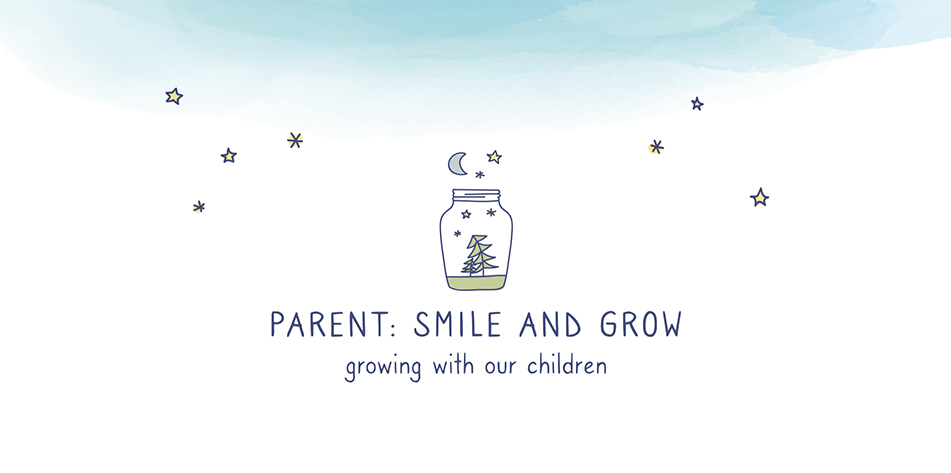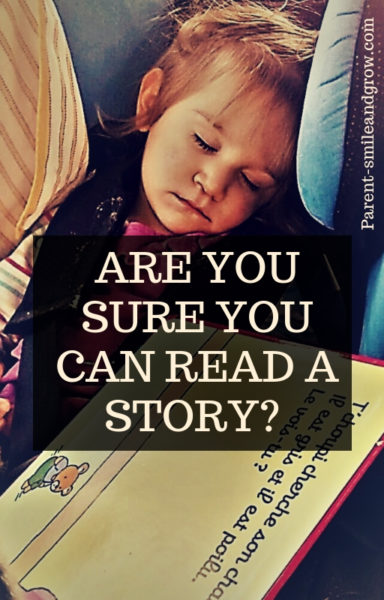When should we start reading stories to our children? Is there an age? Is reading so important even for toddlers? What should we read, and how ? We try to answer these questions by dedicating this week’s post to children’s books. If telling and reading stories is instinctive and spontaneous, well .. there’s a reason! Let’s see how babies and books develop together.
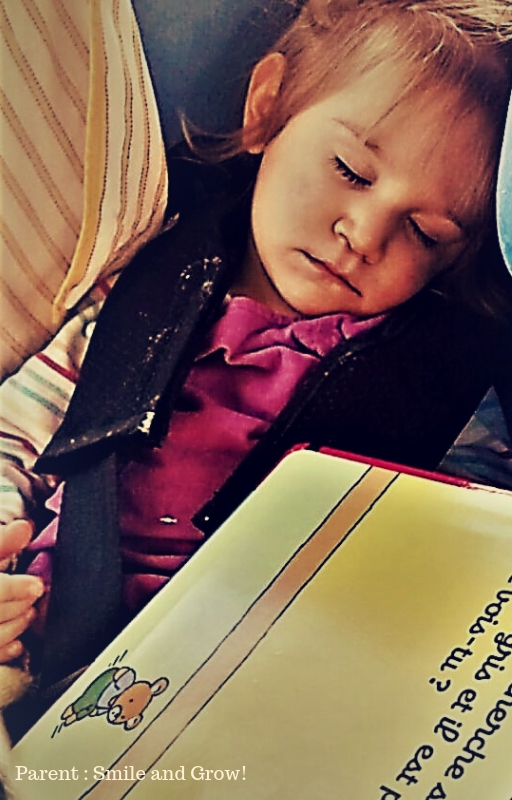
Table of Contents
Children’s books, babies’ books
From what I can recall, I’ve always loved to read. I often imagined how I could have passed my passion on to my children; I was anticipating the intimacy of a good story before going to bed, all under the duvet, while it’s dark outside.
However, I didn’t know anything about what happens before this phase. Books eaten, pulled and thrown; pages browsed in a random order; distractions after two minutes; the constant interruption with a thousand questions..
Reading a book to a young child can be frustrating if we imagine a reading activity as we adults do. Children’s books are above all a beautiful way of playing..
The idea for this article came to me by (re)reading Lynne Murray’s book, “Psychology of Babies“. The last chapter is devoted to sharing books with young children. It may seem a little premature at first sight .. As by my examples above. How shall we read a book to a baby? Yet, in principle, it’s one of the activities that most supports language learning and cognitive development!
The author indicates some key characteristics for reading’s effectiveness, according to the age of the baby.
I thought it would be interesting to share them with you!
Children’s books and language : an incomparable aid
The book I am talking about is especially dedicated to children from 0 to 2 years old. First of all, we shall forget about reading aloud a twenty-page story before bed, as I naively imagined. It’s not time yet!
I even add: even now that my daughter is 5 years old, I can’t suggest her to read books without pictures for example. (I can’t do much of imposing a book, period. She rightly wants to choose her own books).
Children’s books in this age-range are therefore very different from those for older children. And the reading activity is different. Less intuitive for us .. It’s worth exploring the subject!
The key word in this case is “sharing”: books for children at a young age should be shared. Above all, it’s a matter of looking at it together, of touching, of grimacing, of showing images, of naming the corresponding word aloud …. In short, playing!
We will then see how the child’s attention evolves and therefore also reading books; as well as the main features of children’s books by age.
Feel like we could keep in contact? Come on in 🙂
The 4 critical elements for babies learning language
- Tone of voice
- Repetition
- Use of images
- Relationships with physical people
Instinctively, we adults address babies with a particular way of speaking. A very emphatic tone of voice, short, simple and repeated sentences : Look at the ball! Have you seen the ball? This ball, it is beautiful! Oh yes, do you like this ball too?!
and so on. No need to stress that we would never use this way of talking with an adult, not even with a 5 year-old.
Newborns’ brain allows them to register the patterns and the structure of the language to which they are exposed. We are actually programmed to learn a language!
The thing that I find extremely interesting is that during a recent study (for which I don’t remember the sources, I’m sorry), they’ve found out that the brain’s areas that allow babies to learn the language are activated only during face-to-face interactions; on the other hand, they are not activated if the children are placed in front of a screen (television, computer, etc.).
It is therefore useless to hope that our little ones “capture the sounds” of a foreign language simply by watching a cartoon or listening to the TV ! (I had hoped …)
Why should children’s books help them to better learn the language ?
Among the indicated elements, the main feature is that during this activity, we, the parents, spend a lot of pleasant time with them. We point together at the pictured objects, or animals, and repeate their name aloud.
We can take inspiration from the story or the images to talk about feelings, emotions, intentions and other abstract concepts. The repetition of this pleasant experience reinforces the connection between sound and concept in children.
Through pictures, children can have a direct and independent experience of the object. This is useful for perceiving and knowing elements that in real life change too quickly for their brain to record.
For example, the expression of an emotion on someone’s face; or things far removed from their everyday reality (the sea if they live up in the mountains, the farm animals if they live in the city, etc.).
By turning the pages in all directions, and with the verbal support of the adult, children can, for example, perceive abstract and complex elements such as cause-and-effect relationships; or what actions can trigger certain emotions; what intentions govern certain actions and so on.
What’s so special about children’s books at such an early age?
Not only the material (resistant cardboard, or fabric; perhaps inserts of different materials for a tactile experience, etc.).
Books for young children generally have few objects per page, without any detail; the lines and colors are simple; the essential elements of the pictures and the story are repeated on each page.
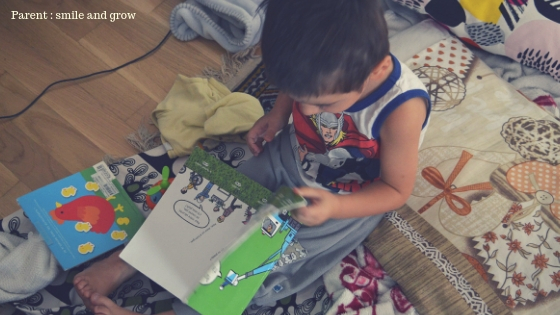
Tips and tricks to make reading effective
- Let’s start early, from the very first months, to make books an integral part of baby’s daily life.
- We should look at the books together, regularly.
- Reading is fun! Make it a pleasant moment, serene and peaceful.
- Let’s be attentive to what arouses the interest of our child. Follow his “signals” and pause or emphasize what he likes, without hesitating to turn the page or stop the activity if baby shows signs of impatience or annoyance. For a baby, focusing on an activity for a long time can be very tiring and difficult. If we can read almost daily, and in a moment of the day when we are completely available and relaxed, day by day we will become more and more sensitive to the understanding and interpretation of the signals the baby sends us, and will make this experience more pleasant for both.
- Always say aloud the names of the represented objects.
Why not joining our community of parents for mutual support ?
How does reading evolve in this age group? And how to intervene?
0-4 months
Newborns still can’t handle objects very well; the parent serves as a physical medium to hold the book and flip through it. Let’s insist on the images that seem most interesting to the child! The most appropriate books have contrasting colors; (black and white for example) and shapes that look like people’s faces .
4-5 months
At this stage, babies usually like to touch and put things in their mouth; they bite, grasp, pull; once we have chosen a book of an adapted material for the child to be safe (hard cardboard or fabric for example, without small parts), let him free to play with it, and show our enthusiasm for all the pictures that interest him. Always repeat the name of the represented objects.
9 months
In this period, children begin not only to point, but also to observe what we indicate to them. The interaction with the parent is thus reinforced. Let’s keep the word repetition out loud as a key point!
12 months
Generally, towards their first birthday, children begin to say a few words and, in any case, understand their meaning. The reading becomes more and more interactive, because one can intervene by asking questions: “Where is the cat?” Or, by pointing to a known object, “What’s that?” and so on, repeating the word to emphasize the correct pronunciation. If we can, let’s stop correcting “No, we don’t say it like this, we say that …” but just repeat the correct word. This will reinforce both the child’s learning and self-esteem 🙂
12-24 months
The basic exercise remains the same, but the interaction increases, the vocabulary enriched. The images in the books are now filled with details and nuances. We can introduce parallels between stories and everyday life: if we talk about the wolf’s mouth, we can ask him “Where is your mouth?” and “Look how big is my mouth!” or things like that. Improvise and play 🙂 .
2-4 years-old
Let’s start with longer, structured stories. Stories about the world, how it works (my son, for example, loves dinosaurs and building sites); or stories that talk about similar situations to those the children experience in everyday life (my daughter likes to read stories about little girls who face difficult social situations, such as not being able to managing anger, mocking comrades, or who don’t want to share …).
5 years-old and up
That’s where indipendent reading really kicks off. Which doesn’t mean they won’t ask you to read a story anymore; but they will start recognizing letters and words, and enjoying spending time with a book on their own. That’s also an awesome period to really dig into non-fictional reading! And for that, I suggest this article to deepen the importance of reading Non-Fiction books.
Children’s books and transitions
Children’s books are really very useful for talking about difficult episodes that the child is facing, such as the arrival of a little brother or sister; entry into nursery school or preschool; moving into a new house, etc. .
Observing a character who reacts and feels the same emotions can really help putting into words an abstract concept or new sensation; this not only improves language acquisition, but also self-awareness. It allows children to make sense of the difficulty they might be experiencing.
It can also be useful to parents to clarify rules and routines : when we discovered “What George Forgot“, a book about a little boy going to school and forgetting something on his way.., we could make fun of our sometimes difficult morning routine.
There was one other book that my daughter made me read a million times. It was a gift for her from a couple of friends, when we were about to move; it turned out to be a life-saver.
The main character was a little girl, with the same name as my daughter, who was moving into a new house while mom was expecting a little brother or sister. We were in the same exact situation. We read it multiple times, explored it, reinterpreted it; but the relief in my daughter’s eyes when she understood what was happening to her ..!
With this experience in mind, I started using children’s books in any difficult situation. Little brother is coming? Hop, here’s the book!
Period of fears, nightmares and difficult sleeping? There it’d go with stories about monsters, darkness, the magic of the night. We loved “Goodnight world“, with its poetic images. Quarrels, tantrums, violent remarks? We read about anger, angry kids, and so on.
It has allowed me to talk about it more calmly, perhaps referring to the characters of the stories rather than directly to my children.
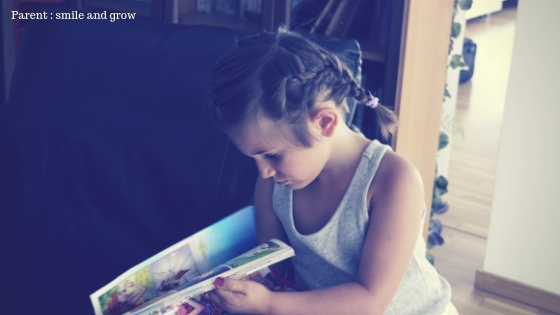
Children’s books and .. the developing brain
Why all this pictures and pointing helps so much? Small parenthesis on brain’s development (I know I know… but I love it! 🙂 ).
At around 18 months, the orbital-frontal cortex is maturing, and begins to store images. As situations we experience are repeated over and over, these images of ourselves in relation to others are stored in our brain with the associated emotions.
This ability to internalize and therefore summarize lived situations and emotions is an important stage of development, as it allows the child to acquire a behavioral guide, even in the absence of a mother, dad or caregiver.
That’s why, at this point, we can start reading more complex stories. At this stage, the child has a small library of images related to her own experiences and manages to summarize more complex concepts. That’s how we can use the stories we read to refer to personal situations!
You can also find some other interesting reports on scientific research about books and baby’s brain by reading this article.
Children’s books are our aces.. if we have fun with them!
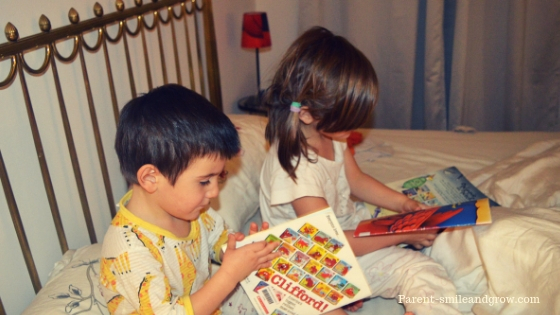
I think this is the most important thing, always and at any age: have fun! Let’s laugh, play, even cry if we are moved; but let books rhyme with pleasure for all.
I learned that books and stories can really help our children think, reflect upon themselves, and also learn speech. But it only works as long as it remains a game, a playful beautiful moment … Otherwise, the spell is broken.
As further readings, I may suggest you this age-by-age guide, that presents a short video about how to read to our baby.
You can also take a look at this review, or this one, both about what to read, why, and when. The basics questions right?!
And also, you need to check these suggestions on the best bedtime reading resources: they are divided by age and can be of huge help.
To conclude, let me ask you 3 things:
-
Share this post if you found it useful! Sharing is caring 😉
-
What do you think? What do you like to read? And what do your children like? Do you have a favorite moment to read together with your child? For us, it’s always before bedtime; and when we get home from school a little late, and we are tired on the couch .. Before girl # 1 and son # 2 start arguing about what mom shall read first! But that’s another story! 🙂
-
You liked the article and you’re interested in joining the club and receiving food for thoughts and inspiring suggestions directly in your inbox? It’s over here!
